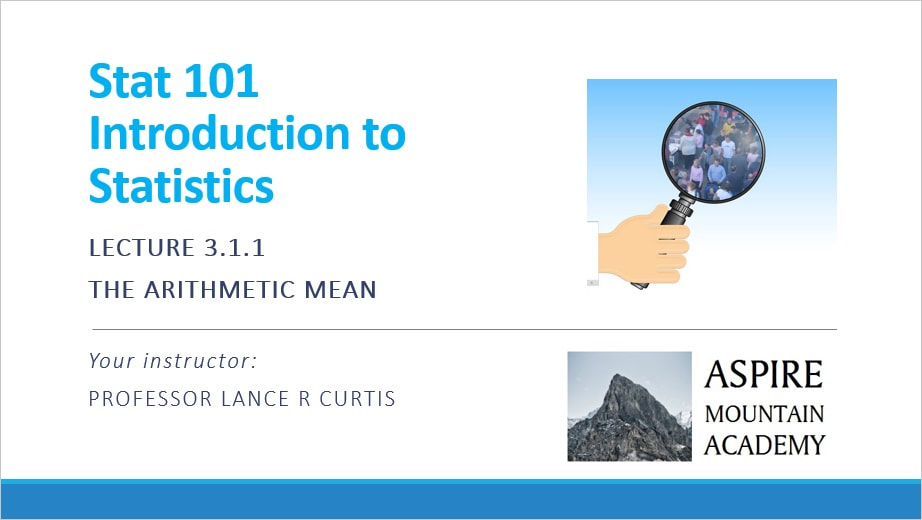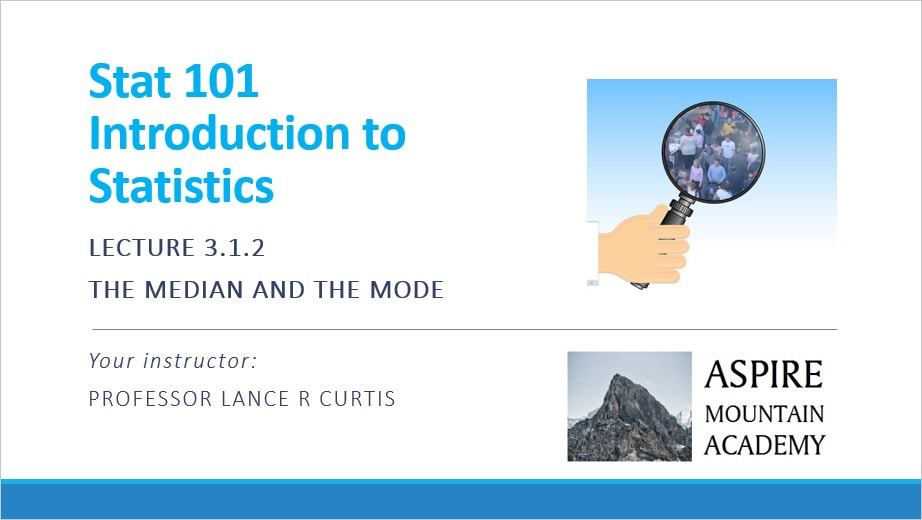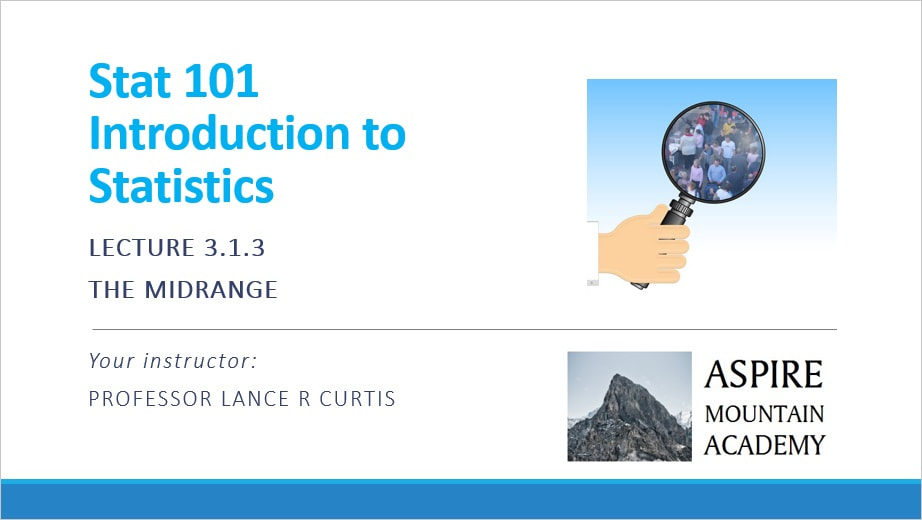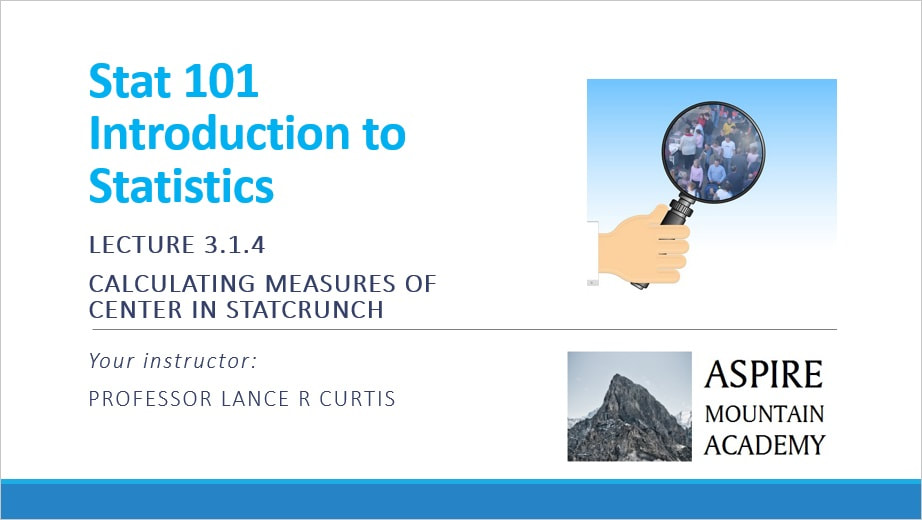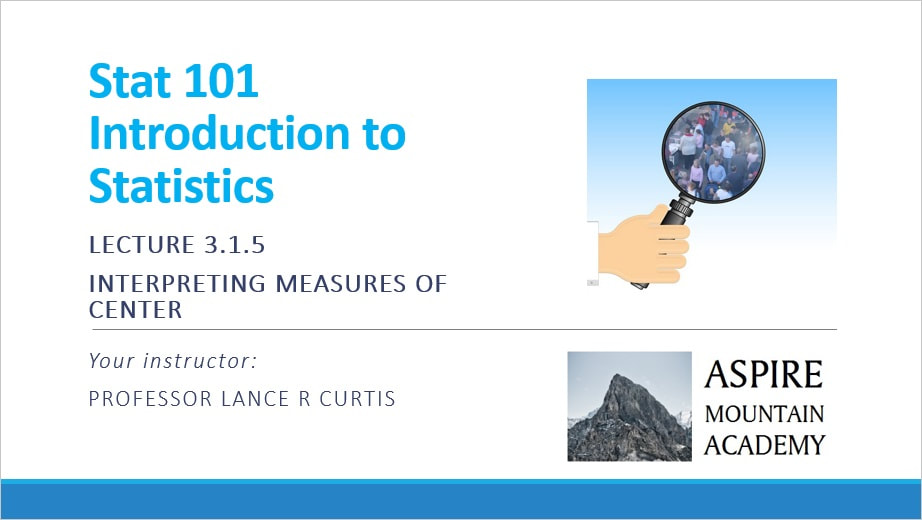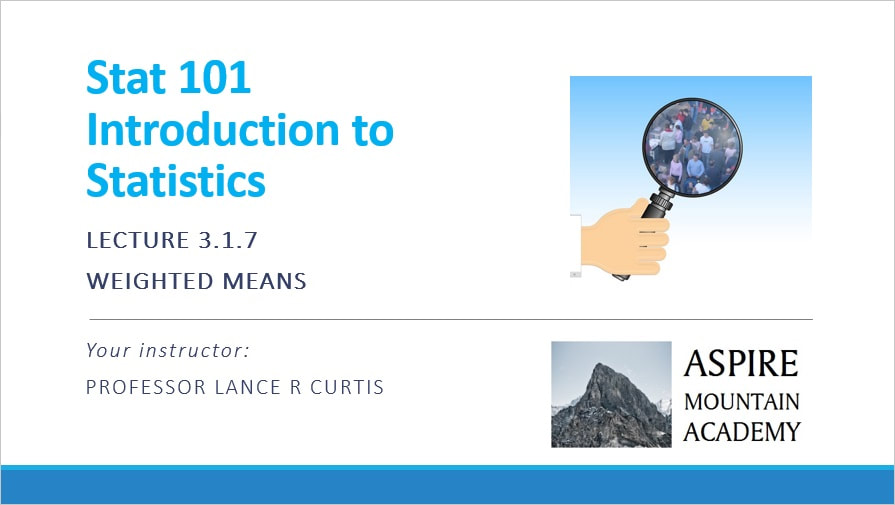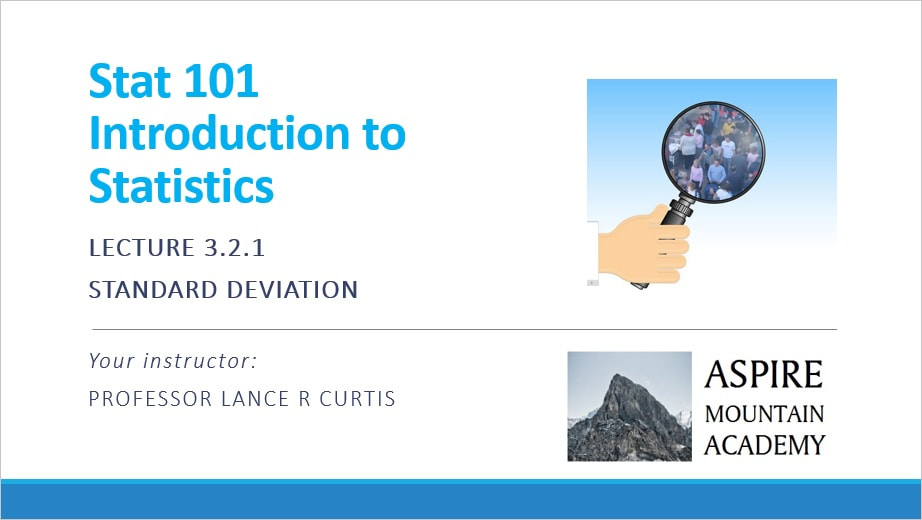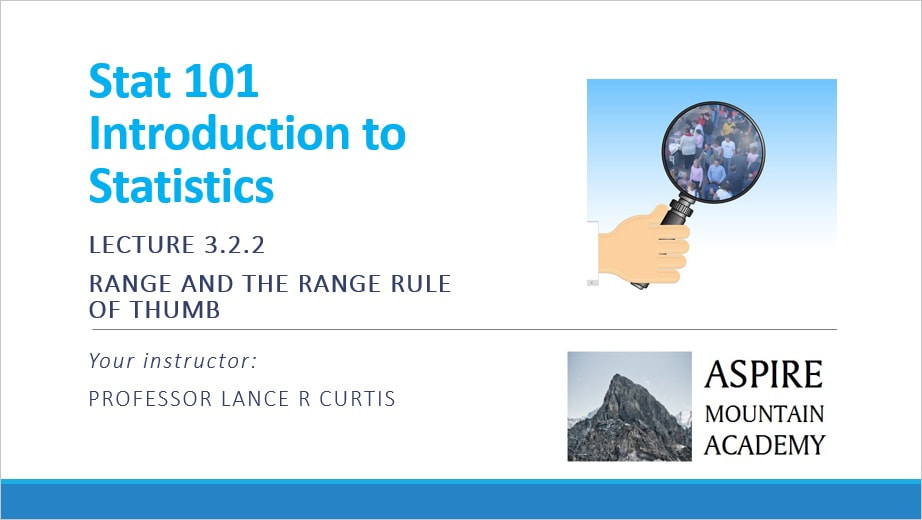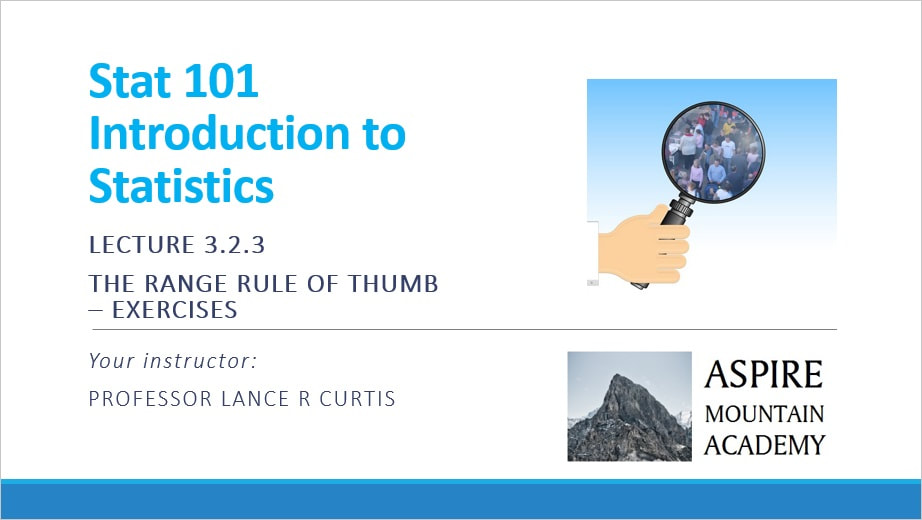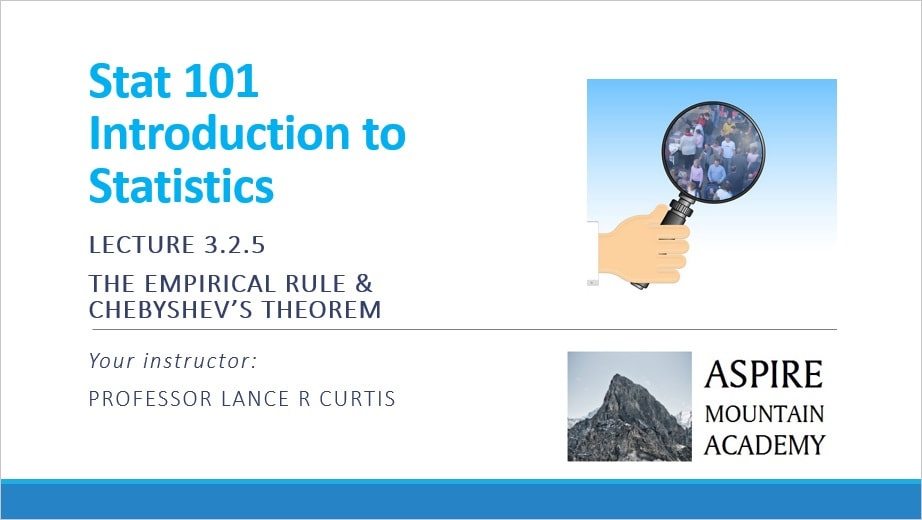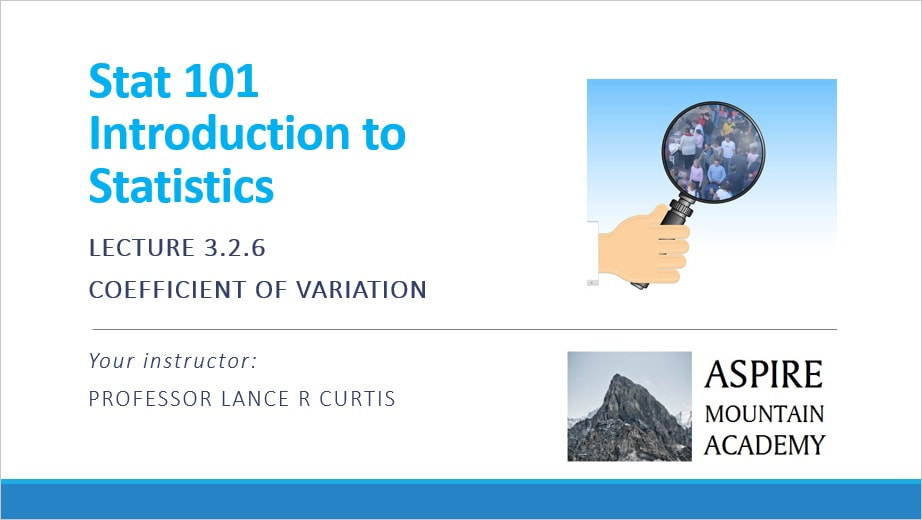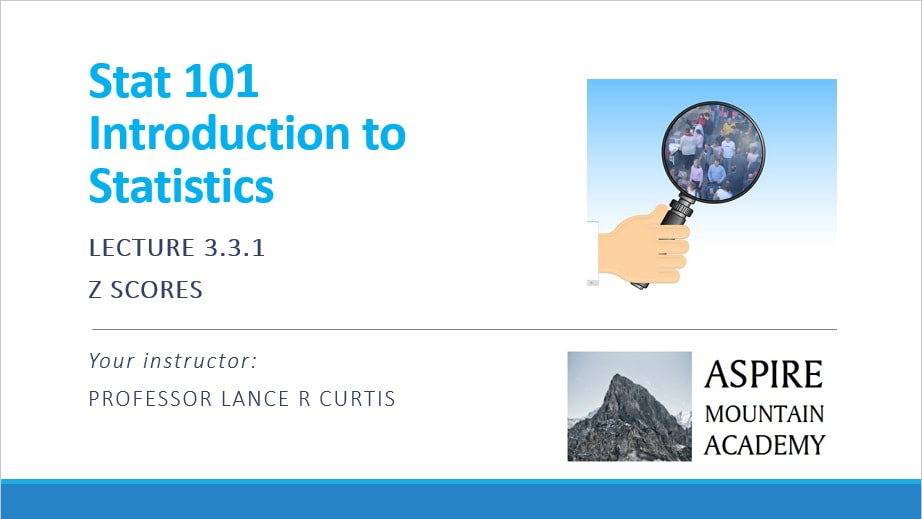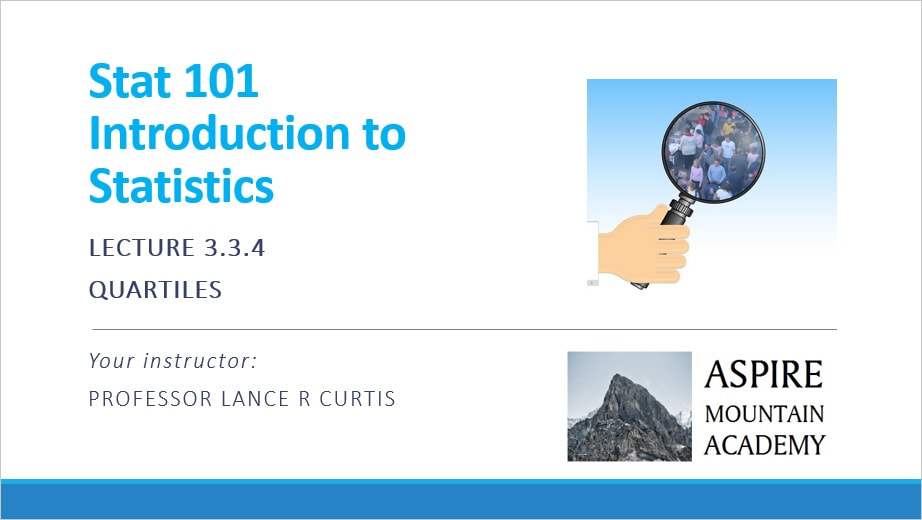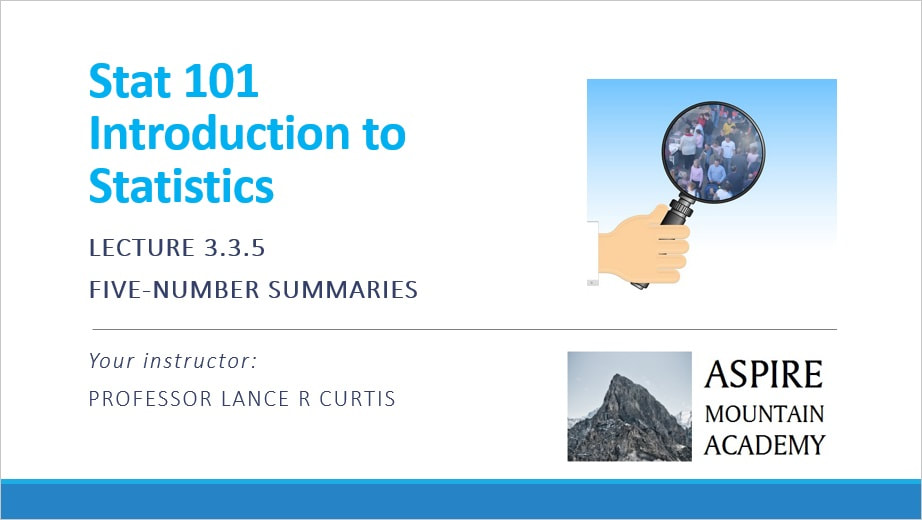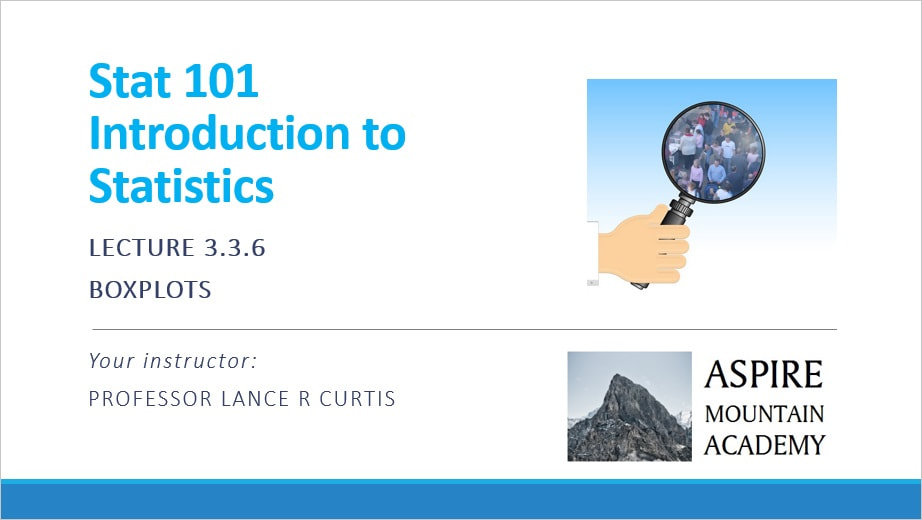The outline below lists all the lectures for Section 3 of the Aspire Mountain Academy course in elementary statistics. Once the lecture video becomes available, the title will become a link to the video and a brief description will appear below the title.
Section 3 - Describing and Comparing Data
Section 3.1 Measures of Center
|
Section 3.2 Measures of Variation
|
Section 3.3 Measures of Relative Standing
|
Lecture Video 3.3.4: Quartiles
This mini-lecture explains what quartiles are and then uses example problems to demonstrate how to find percentiles and quartiles. It also includes an in-depth primer about sorting data in StatCrunch as well as a tutorial on finding the data value that corresponds to a given percentile.
|
Lecture Video 3.3.6: Boxplots
This mini-lecture describes boxplots, including the use of outliers in modified boxplots, and shows how to construct boxplots in StatCrunch. The StatCrunch tutorial also shows how modify the presentation of your boxplot (or other graphical representation) to match better the answer options in multiple choice questions.
|
Stats
|
Company |
|
